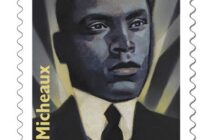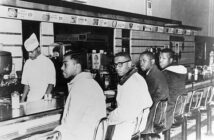There were Hit after Hit in the Mid-50’s his show is flamboyant, he wears flashy costumes and a stylish hair, Little Richard, is often called “the Georgia Peach,” he shouts himself “the innovator and the architect of rock and roll.” His wildly energetic rhythm-and-blues records crossed over to the pop charts and made him one of the first rock stars. His pounding piano, screaming vocals, and exuberant stage persona have been emulated but rarely matched by several generations of rock musicians.
Born Richard Wayne Penniman in Macon on December 5, 1932, Little Richard was one of twelve children. His father, Bud, worked as a brick-mason, sold moonshine, and operated a juke joint called the Tip In Inn. Despite the business interests of Penniman’s father, the family was deeply involved in the church. Penniman’s mother, Leva Mae, met his father at a church revival, and Penniman’s grandfather and uncle were preachers. Penniman first performed in a family gospel group that often competed against other quartets in local contests. A part-time job at the Macon City Auditorium gave him the opportunity to study many leading rhythm-and-blues and gospel acts.
Penniman was a manic, unruly youngster whose flamboyant mannerisms and gay friends often put him in conflict with his father. He was fascinated by the traveling medicine shows that came through town, and at fourteen he left home with one. By the age of fifteen he was performing with a minstrel show and had adopted the stage name Little Richard.
Little Richard soon gravitated to Atlanta, a focal point for the national rhythm-and-blues scene. At the 81 Theater, Little Richard met and was influenced by the singer Billy Wright, whose big hair, heavy stage makeup, and gospel-styled blues shouting made him a local favorite. Through WGST disc jockey Zenas Sears, Wright helped Little Richard secure a record contract with RCA, and at age eighteen he had his first recording session.





